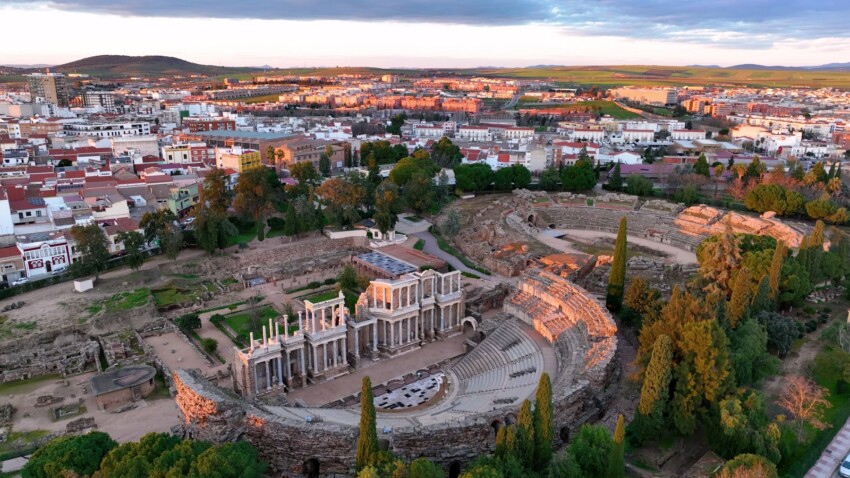

Mérida is unique in all of Spain: profoundly Spanish in its lifestyle, it is almost entirely Roman in its beauty. Founded by the Romans in 25 BC, it soon became an important military and cultural centre: the ancient ruins preserved to this day are tangible evidence of its greatness.
These magnificent artefacts are scattered all over the city, some of them well signposted in guidebooks, perhaps included in an archaeological tour complete with visitor centre and entrance fee, while others pop up in the most unlikely corners. You will soon get used to such an abundance of ancient treasures and with each new corner to turn, you will wonder what is there: a theatre, a house, a column, a basilica, a mosaic?
Experience this unique mix of Spanish joviality and Roman elegance in Mérida: between visits to museums and monuments and stops at lively tapas bars the day will pass quickly. At night, expertly illuminated, the ancient monuments appear even more impressive and you can experience a moment of pure magic.
Located along the Via de la Plata, the hiking route that crosses Spain from south to north, Mérida is set in a rural landscape of romantic beauty. From here you can easily drive to visit the magnificent villages in the surroundings, such as Zafra, Llerena and Jerez de los Caballeros.
If you love ancient ruins, Mérida is a kind of toyland for you. Get ready for a day with a packed schedule: make the most of your time by heading straight for the must-see attractions.
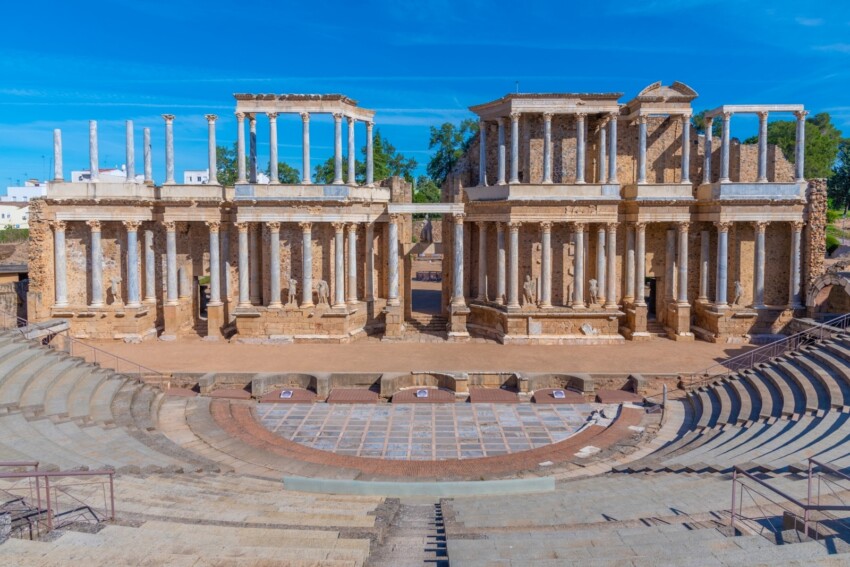
The top attraction in Mérida, which alone is worth a visit to the city, is the magnificent Roman Theatre: a marvel of antiquity that is still used for its original function. In the summer months, in fact, Mérida’s Roman Theatre is the spectacular location for a popular festival of ancient theatre.
Built in 15 BC, it could seat up to 6,000 spectators (some sources say as many as 10,000), which gives an idea of the grandeur and importance of Mérida at the time. It was sacked several times by the Visigoths, who used its stones to reinforce the city walls.
All that remains of the original theatre are the marble columns, lintels, sculptures and the base of the stage. Other original parts found during archaeological excavations have been returned to their original location thanks to an impressive restoration project that allows us to admire the theatre in a form very similar to how it was in antiquity.
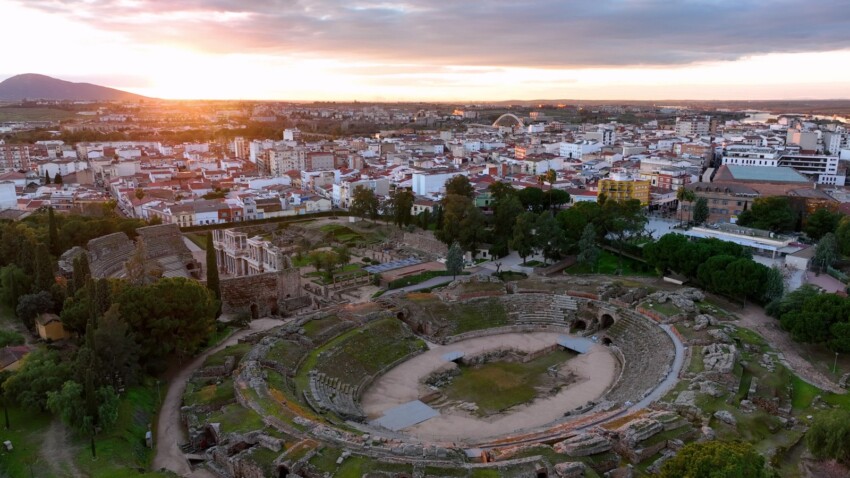
The Roman Amphitheatre, built in 8 B.C., is located next to the theatre and was the site of gladiatorial games. The structure, which could hold 15,000 spectators, still preserves original elements such as the arena, part of the tiers of seats and the underground galleries where the gladiators were prepared.
Tours allow visitors to explore both the tiers and the underground structures, offering an in-depth understanding of how this type of building functioned in antiquity.
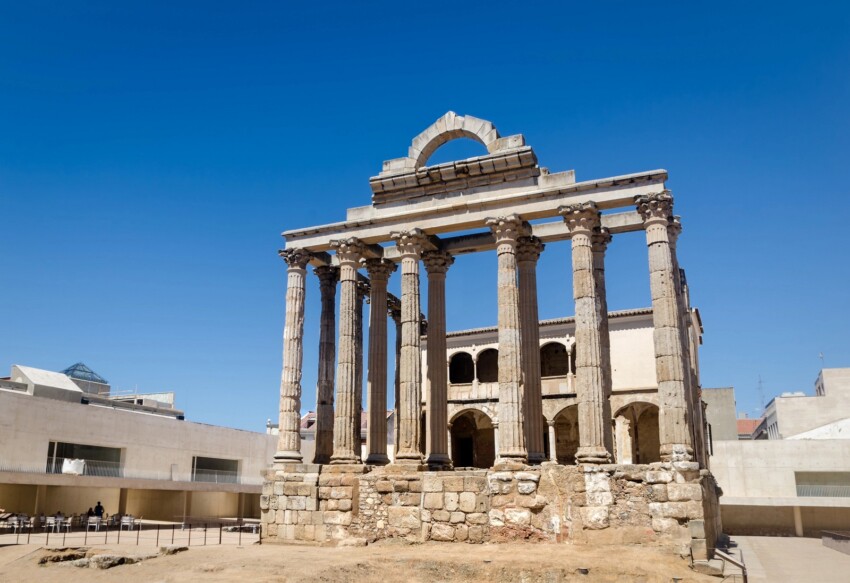
The Temple of Diana is one of the best preserved Roman monuments in the city. Despite its name, it was probably dedicated to imperial worship. The building, located in the centre of the modern city, is particularly interesting because it incorporates a 16th century Renaissance palace built between its columns.
The structure offers a perfect example of how Roman architecture was reused and integrated in later eras, creating a unique monument that tells different phases of the city’s history.
The National Museum of Roman Art is another unmissable attraction in Mérida. Spread over three floors, it exhibits an impressive collection of statues, frescoes, coins, mosaics, ceramics, busts and handicrafts. Among the exhibits you will also find a fresco depicting a gladiator fighting a lion, which was taken from the Roman theatre and brought here to better preserve it.
The museum venue is a distinctive brick building designed by Spanish architect Rafael Moneo, which effectively enhances the beauty of these thousand-year-old works.
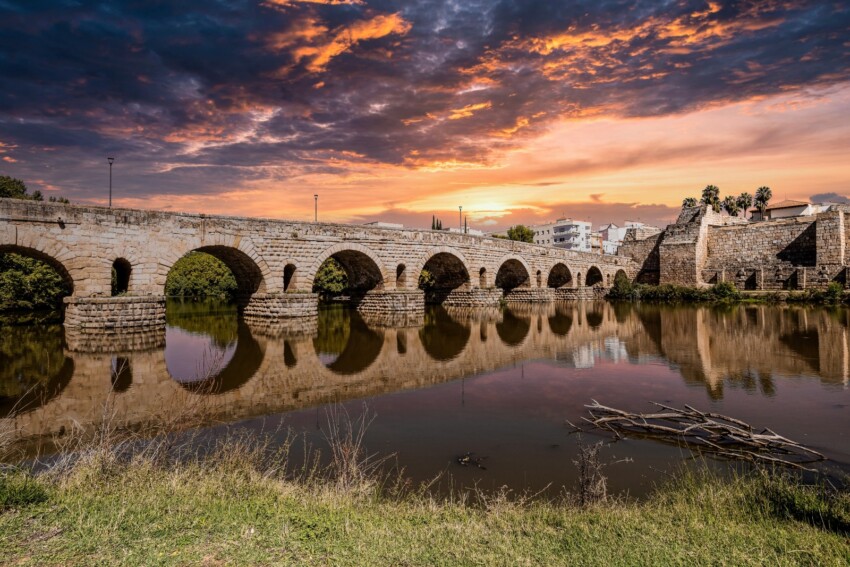
One of the best known images of Mérida is the monumental Roman Bridge that connects the two banks of the Guadiana River. This is one of the longest Roman bridges preserved to date, and certainly one of the longest in ancient times: it measures 792 metres in length and has no less than 60 granite arches.
It was built in 25 BC and restored in the 17th century; in contemporary times a modern bridge was added to mirror it, designed by the internationally renowned Spanish architect Santiago Calatrava.
The best view of the bridge is from the southern bastion of the Alcazaba.
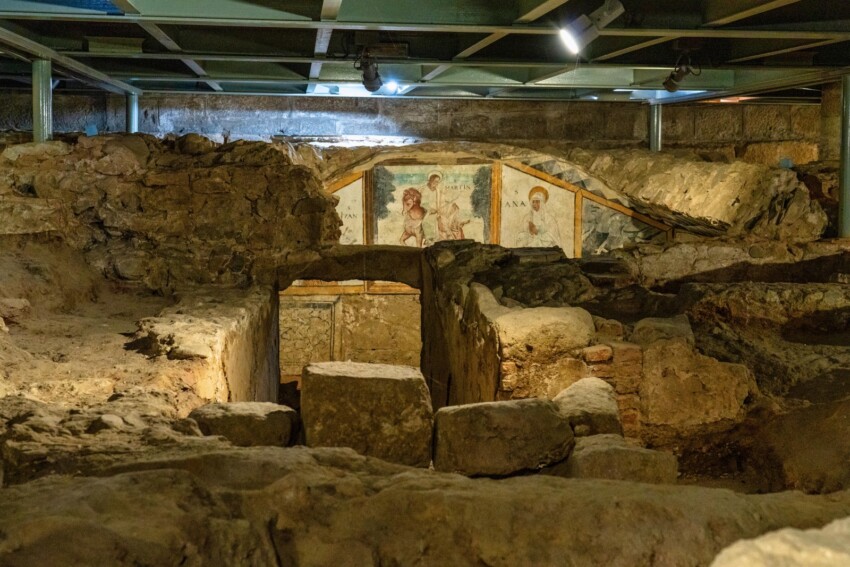
The Crypt of Santa Eulalia, beneath the basilica of the same name, contains important archaeological remains documenting the evolution of the city from Roman times to the Visigothic period. The crypt is particularly important for understanding the development of early Christianity in the Iberian Peninsula.

The only famous attraction in Mérida that is not linked to its Roman origins is the Alcazaba, an Arab fortress built in the 9th century. It may not be the most monumental of the Arab fortresses in southern Spain, but it may be the oldest.
What is certain is that it is a real treat to walk inside this complex full of marbles, cisterns and bastions from which to admire panoramic views of the city.
The theatre, museum and bridge are the best known and most visited Roman attractions in Mérida but almost on every corner you can find a fascinating ancient artefact. Whether it is just a piece of column or an almost entirely preserved house, these vestiges of antiquity will thrill and captivate you with their thousand-year-old charm.
Continue your exploration of ancient Mérida by admiring these ruins:
In the following map you can see the location of the main places of interest mentioned in this article.
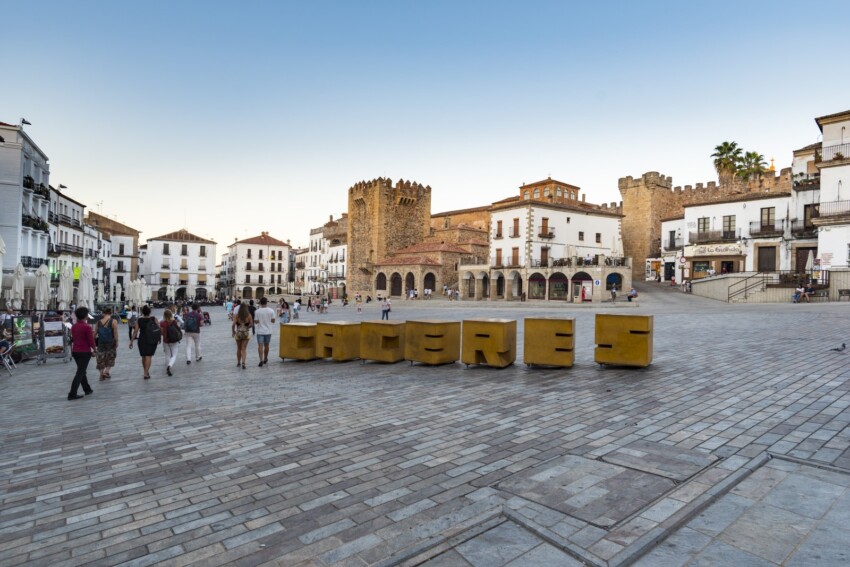
Mérida’s central location in Extremadura makes it easy to explore the region. Renting a car is recommended for maximum flexibility.
The medieval city of Cáceres, a UNESCO World Heritage Site, is located 75 km from Mérida. Its perfectly preserved historic centre offers one of the best examples of medieval and Renaissance architecture in Spain.
Trujillo, 85 km from Mérida, is a picturesque town known for its Renaissance palaces and for being the birthplace of several conquistadors. Its Plaza Mayor and medieval castle are particularly impressive.
The Monfragüe National Park, about 100 km from Mérida, is one of the best places in Europe for watching birds of prey. The park also offers hiking trails and beautiful views of the dehesa estremeña.
The town of Olivenza, 60 km from Mérida, offers an interesting mix of Spanish and Portuguese culture. Its fortifications, churches and palaces bear witness to its rich historical past.
Hotel prices in Mérida are on average lower than in more famous Spanish resorts, which means that even a luxurious 4-5 star hotel with a swimming pool is affordable. If you are travelling low-cost, you can opt for cheap 2-star guesthouses or characteristic hostales (small family-run hotels).
There is also a good choice of flats, which are clean and bright and are a great option for families, groups of friends or couples who want more privacy.
Mérida is part of the province of Badajoz, in the Extremadura region. It is about 200 km from Seville and 300 km from Madrid. Although it is off the beaten tourist track and there are no international airports nearby, it is a fairly easy city to reach.
The easiest way to reach Mérida is to fly to Madrid and from there take a direct train or bus. The journey time from Madrid to Mérida can vary from 4 to 7½ hours. Even simpler is to fly to Lisbon and take a direct bus: in this case the bus journey is shorter, about three to four hours. Both Madrid and Lisbon are served by low-cost flights from all major European cities.
Mérida can also be reached by train from Seville and the main towns in Extremadura.
Although it is possible to get to Mérida by public transport, travelling by car is a good idea because it allows you to create your own itinerary and also see towns that cannot be reached by bus or train. The most convenient solution is to rent a car directly at the airport: calculate about three hours to get there (either from Madrid or Lisbon).
What's the weather at Mérida? Below are the temperatures and the weather forecast at Mérida for the next few days.
Mèrida is located in Extremadura, close to the border with Portugal. It is more or less equidistant from both Càceres and Badajoz: it is less than an hour's drive from both.